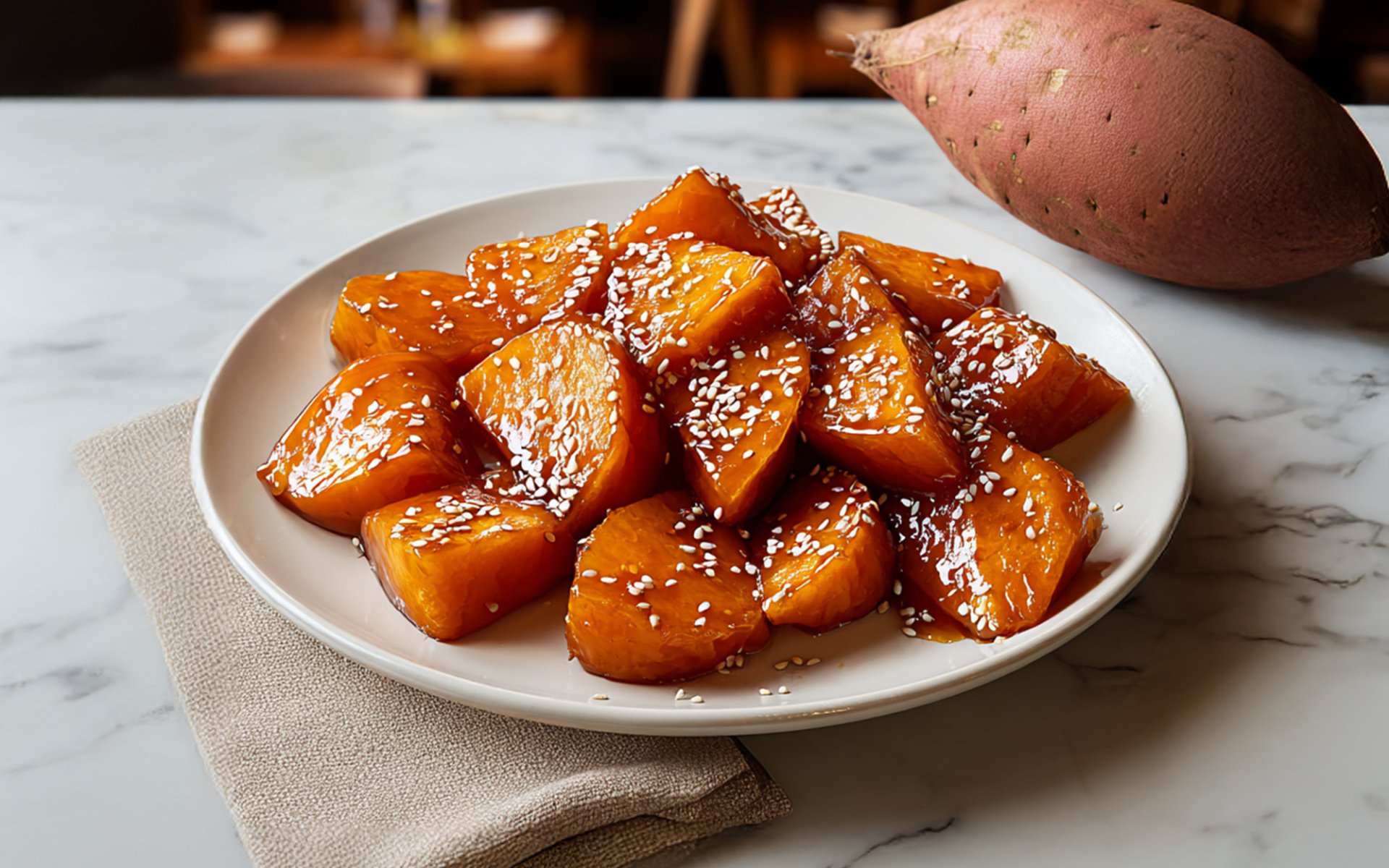Goguma Mattang (고구마 맛탕)

Origins and Chinese Influence
The dish traces its origins to the Chinese cooking technique Básī (拔丝), which involves caramelizing sugar until it forms silky threads that can be pulled apart. Koreans adapted this technique and applied it to sweet potatoes, creating Goguma Mattang.
Unlike regular sweet potatoes, Korean sweet potatoes have a unique character. Their flesh is pale yellow or cream-colored, naturally sweeter, and fluffier in texture compared to the common orange varieties, making them ideal for this dessert.
A Traditional Treat with Cultural Meaning
Originally, Goguma Mattang was a homemade treat prepared for celebrations or special occasions. The process required skillful control of heat and timing to achieve the perfect caramel coating, reflecting the cooking expertise of homemakers of that era.
Sweet potatoes themselves also played a significant role in Korean food culture. In the past, they were a vital winter food source, providing carbohydrates and energy. While roasted sweet potatoes were the most popular way of eating them, dishes like Goguma Mattang showcased their versatility.
By the 20th century, Goguma Mattang became more widely available in Chinese-Korean restaurants (중국집), often served as a dessert after meals of Jajangmyeon (black bean noodles), dumplings, and other Chinese-inspired dishes.
For many Koreans, Goguma Mattang holds nostalgic value, often associated with family dinners, gatherings, and shared experiences.
A Unique Way of Eating
Traditionally, Goguma Mattang is eaten by picking up a piece with a toothpick and dipping it briefly in caramel, which hardens into a crunchy shell. The result is a delightful crack when bitten into, followed by the soft sweetness of the potato inside. This playful texture is part of the charm and fun of sharing Goguma Mattang with others.
Preparation Process
Making Goguma Mattang begins with selecting high-quality Korean sweet potatoes. They are peeled, cut into bite-sized pieces, then soaked in water to remove excess starch and prevent discoloration.
The pieces are then deep-fried until golden and tender inside. Meanwhile, sugar is slowly caramelized over low heat until it reaches a golden-brown stage. Careful temperature control is crucialtoo much heat and the sugar will burn.
Finally, the fried sweet potatoes are tossed in the hot caramel, ensuring an even coating before serving.
From Tradition to Modern Convenience
Over time, Goguma Mattang has evolved into commercial products, ranging from frozen fried sweet potatoes with caramel syrup to ready-to-eat packaged versions available in supermarkets.
Whether enjoyed as a nostalgic homemade snack, a restaurant dessert, or a store-bought treat, Goguma Mattang remains one of Koreas most beloved sweet potato dishes, cherished for its crisp caramel shell, soft interior, and irresistible balance of flavors.
For those who want to try making Goguma Mattang at home, all the ingredients are available at Rimping Supermarket.


